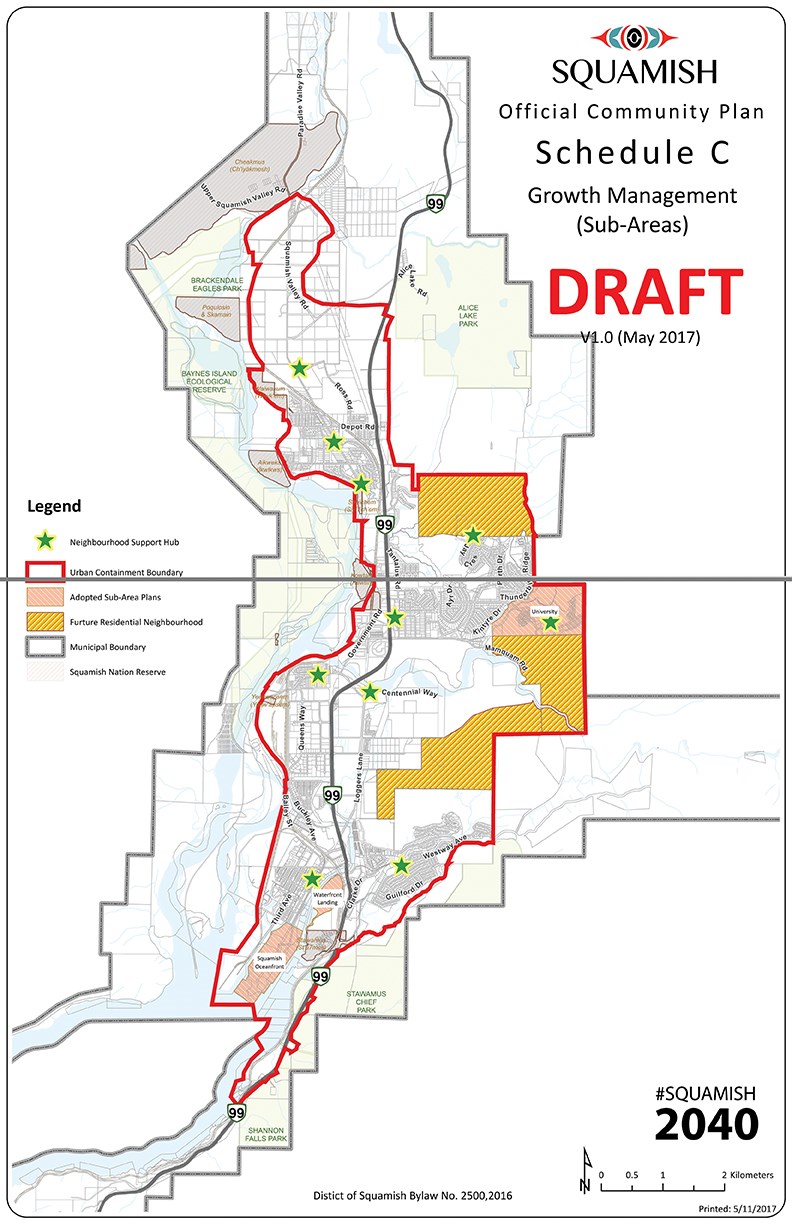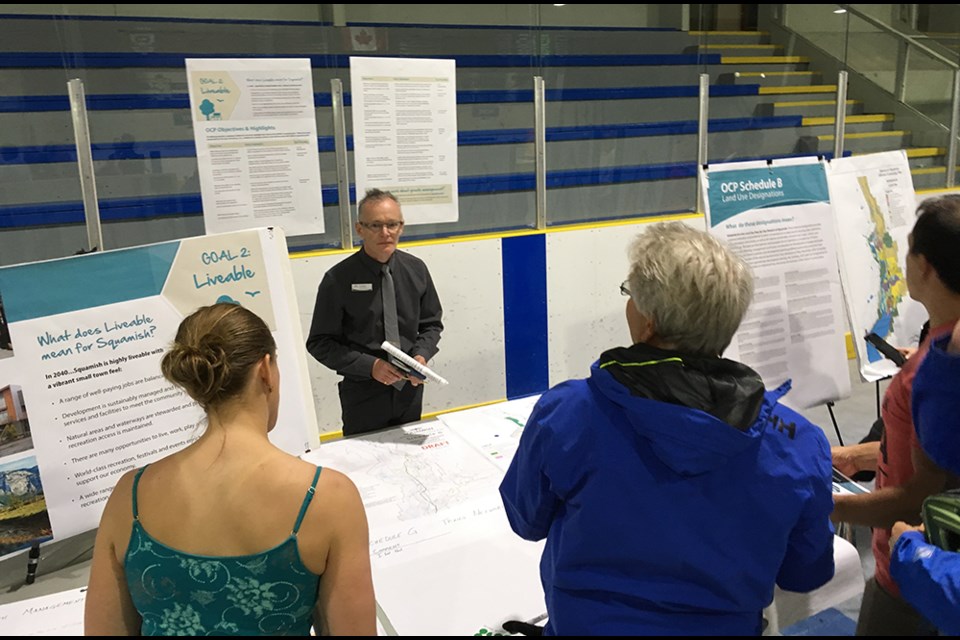Growth management was the hot topic when around 300 residents, developers and business owners visited the Squamish 2040 open house to see what the future of the district could look like.
Attendees asked questions about the District of Squamish draft Official Community Plan, gave feedback and looked over poster boards explaining the proposed changes to the plan that, until now, hadn’t been updated since 2009.
The busiest area at the open house on May 24 at Brennan Park Arena dealt with how Squamish will tackle population growth in the coming years.
The District is proposing a new urban containment boundary.
“It is trying to identify a zone within which we want to focus our growth and really that comes down to trying to do infill so that we maximize the efficiency of the services that we have already within the community,” explained Matt Gunn, a District planner, adding the construction that would be allowed within the boundary would be phased over time.
Infill refers to development in areas where buildings have already been built or are already planned for.
“We are not saying build everything right now within that containment boundary. We are saying we don’t want to go beyond this without significant consideration,” Gunn added.
The District has several population growth projections – low, medium and high. The high-growth projection is 44,000 residents by 2036, medium is 34,000 by 2036 and the low-growth projection is 25,600 by 2036.
Residents can weigh in on three options for how the District could manage population growth. Option one maintains the status quo with a population threshold of 22,500 before allowing any development in certain areas designated Future Residential Neighbourhoods and to apply that threshold to all future new neighbourhoods.
Option two increases the population threshold to 34,000 to use up the remaining land within existing and already developing neighbourhoods.
The final option would allow limited development of a small portion of Future Residential Neighbourhoods next to existing developed areas between now and 2040 if “significant community benefits can be achieved.”
The land adjacent to Garibaldi Highlands owned by controversial developer Bob Cheema is within the urban containment boundary, but timing of future development would depend on the public and council’s feedback on growth.
“It is up to the people,” Cheema said with a shrug at the OCP open house last week.
At the open house, Gunn addressed the part of the plan dedicated to making Squamish a resilient community, which related to climate action and community infrastructure.
That section of the plan is informed by risk-mitigation in the District of Squamish’s Integrated Flood Hazard Management Plan and by work on climate change done in collaboration with climate scientist and Quest University professor Ian Picketts.
Gunn said Picketts made adaptation recommendations that were worked into the draft OCP.
An example of a recommendation is regular monitoring by the municipality of the intensity of rain events because that may impact future delivery of the municipality’s services, Gunn explained.
Squamish Climate Action Network is hosting an OCP discussion on Monday, June 5 from 5:30 to 7 p.m. at The Crabapple Café focusing on climate change, waste, “smart growth” and food systems.
Feedback on the OCP is open until June 11: squamish.ca/ocp.
For more information on the OCP go to squamish.ca/yourgovernment/projects-and-initiatives/ocp.




